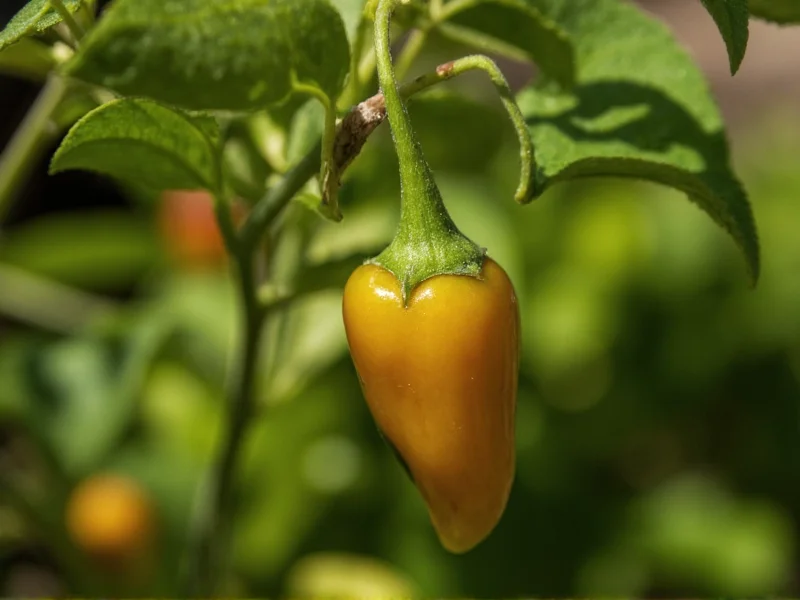Understanding the heat difference between serrano and jalapeño peppers is essential for home cooks and culinary professionals alike. Both peppers belong to the Capsicum annuum species but offer distinctly different heat experiences that can dramatically affect your dishes.
Scoville Scale Comparison: Quantifying the Heat Difference
The Scoville scale measures capsaicin concentration, the compound responsible for chili pepper heat. When comparing serrano hotter than jalapeno measurements, the difference becomes immediately apparent:
| Pepper Variety | Scoville Heat Units (SHU) | Relative Heat Level |
|---|---|---|
| Serrano Pepper | 10,000-23,000 SHU | Moderate to Hot |
| Jalapeño Pepper | 2,500-8,000 SHU | Mild to Moderate |
| Comparison | Serrano is 1.25x-9x hotter | Serrano averages 3-4x hotter |
This serrano vs jalapeno heat comparison reveals that even the mildest serrano (10,000 SHU) is hotter than the hottest jalapeño (8,000 SHU). The average serrano pepper delivers approximately three to four times more heat than an average jalapeño.
Physical Characteristics and Flavor Profiles
Beyond heat levels, these peppers differ in appearance and taste:
- Serrano peppers: Typically 1-3 inches long, smooth thin skin, cylindrical shape. They mature from green to red, yellow, orange, or brown. Flavor is bright, grassy, and intensely peppery with citrus notes.
- Jalapeño peppers: Usually 2-3.5 inches long, thicker walls, often with characteristic striations (corking). They mature from green to bright red. Flavor is more vegetal and earthy with a subtle sweetness.
Culinary Applications and Substitution Guidance
Understanding serrano pepper heat level compared to jalapeno is crucial for recipe success. The significant heat difference means substitutions require careful adjustment:
When considering can I substitute serrano for jalapeno, follow these guidelines:
- For every jalapeño called for in a recipe, use only ¼ to ½ of a serrano pepper
- Remove serrano seeds and membranes to reduce heat intensity
- Add serranos gradually, tasting as you go
- Consider using jalapeño powder if you need consistent heat without fresh pepper variables
Chefs often prefer serranos for salsas, guacamole, and raw applications where their thinner walls and brighter flavor shine. Jalapeños work better for stuffing, pickling, and cooking methods that benefit from their thicker flesh.
Growing Conditions and Availability
Both peppers grow well in similar conditions but have different maturation timelines:
- Serranos typically mature faster (about 70 days) and produce more fruit per plant
- Jalapeños take slightly longer (75-80 days) but develop thicker walls
- Serranos are more heat-tolerant and continue producing through hotter temperatures
- Jalapeños are more widely available in supermarkets year-round
- Serranos may be harder to find outside Mexican markets or specialty grocers
Safety Considerations When Handling Hot Peppers
Working with serranos requires more caution than jalapeños due to their higher capsaicin content:
- Always wear gloves when handling serranos, especially when seeding
- Avoid touching your face, particularly eyes, after handling
- Wash hands thoroughly with soap and water after preparation
- Use separate cutting boards for hot peppers to prevent cross-contamination
- If experiencing burning sensation, use dairy products (milk, yogurt) rather than water to neutralize capsaicin
Understanding Heat Variability in Peppers
It's important to note that heat levels can vary significantly within each variety due to:
- Soil conditions and nutrient availability
- Water stress (drier conditions often increase heat)
- Sun exposure during growth
- Maturity at harvest (redder peppers are typically hotter)
- Genetic variations between plants
This natural variability explains why how much hotter is serrano than jalapeno can differ between individual peppers. Always taste a small piece before adding to recipes to gauge actual heat level.
Historical and Cultural Context
Both peppers originated in Mexico but have different traditional uses:
- Serranos have been used in Mexican cuisine since pre-Hispanic times, particularly in central Mexico
- Jalapeños gained international popularity through canned and pickled products
- Serranos remain more common in authentic Mexican cooking while jalapeños have broader global recognition
- The name "serrano" refers to Mexico's mountainous regions (sierras) where they traditionally grew











 浙公网安备
33010002000092号
浙公网安备
33010002000092号 浙B2-20120091-4
浙B2-20120091-4